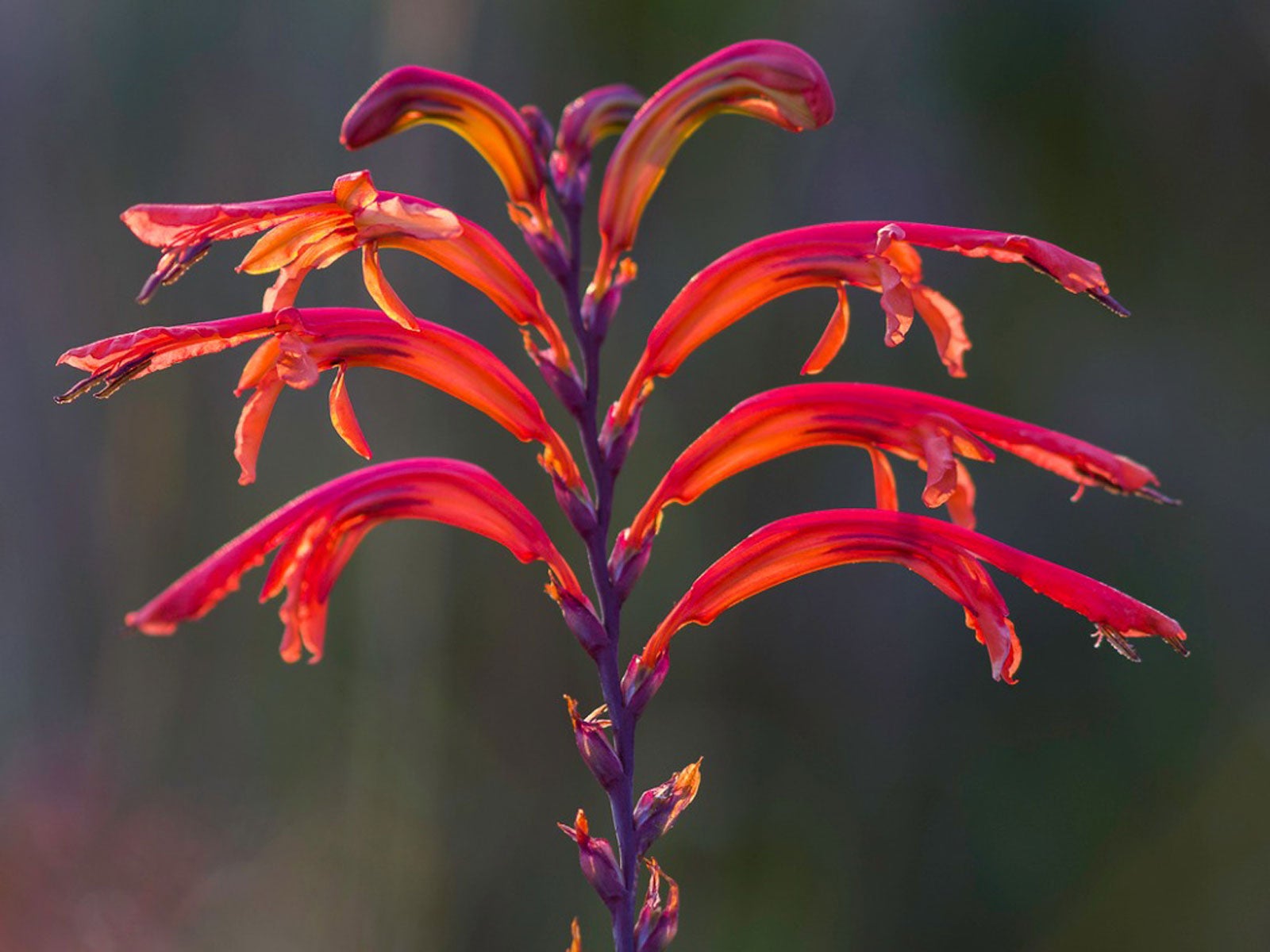Storing Chasmanthe Corms: When To Lift And Store Chasmanthe Corms


For those wishing to create a water-wise landscape, adding plants which are tolerant to drought is imperative. Well xeriscaped yard spaces can be beautiful, especially with showy, bright flowers. Chasmanthe plants, for example, offer ample visual interest as well as a growth habit that is beneficial to planting in regions with exceptionally dry summer weather.
Chasmanthe plants are prized in the ornamental landscape for their broad foliage and vibrant orange-red flowers. Growth of the plant emerges from corms in fall in regions with only light frost. From late winter into early spring, the plant will burst into bloom before once again going into dormancy.
This period of warm weather dormancy is what allows the plant to continue to grow and multiply in the landscape. Digging up Chasmanthe corms and then dividing them once every four years will be essential to maintain bloom and promoting overall plant health.
When to Lift and Store Chasmanthe
After blooming has ceased, foliage and faded flowers will begin to turn brown. At this time, you can carefully remove plant matter from the garden with a sharp pair of shears.
Those who do not experience winter freezes can leave the corms in the ground. The plant will remain dormant throughout the summer. During this time, corms will appreciate a period of dry conditions, hence their usefulness in arid landscapes.
When considering how to keep Chasmanthe corms, gardeners outside of the ideal growing zone can lift the corms to store indoors during the winter in a dry, dark location. Chasmanthe corms can then be planted the following spring, after severe cold weather has passed.
Dividing Chasmanthe Corms
Regardless of whether storing Chasmanthe corms during the winter or replanting them into garden, dividing Chasmanthe corms is an essential part of growing this plant.
Sign up for the Gardening Know How newsletter today and receive a free copy of our e-book "How to Grow Delicious Tomatoes".
As the plants grow, established plantings will accumulate large masses of corms pushing up from the soil surface. Remove the mass of corms and begin dividing them by cutting the mass into segments or through the removal of each individual corm.
Dividing and replanting Chasmanthe corms will ensure that plants do not become overcrowded, which may cause failure to bloom.

Tonya Barnett has been gardening for 13 years. Flowers are her passion. She has transformed her backyard into a cut flower garden, which she regularly chronicles on her YouTube channel http://www.youtube.com/@tonyawiththeflowers.